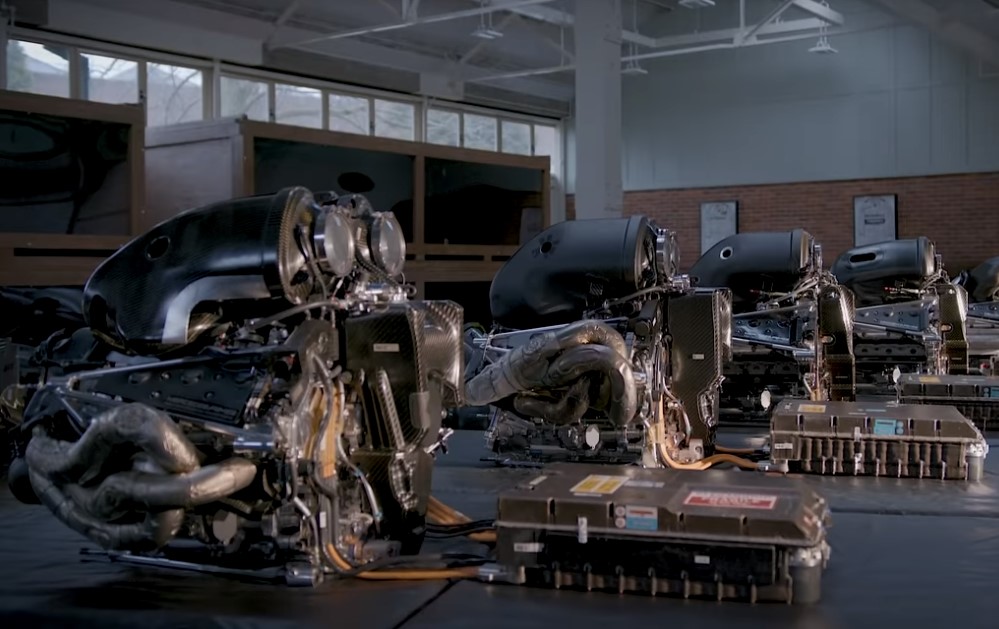F1: Mercedes manipulated engine rules to dominate F1 for years
–by Mark Cipolloni–
A former Mercedes’ engineer has said that they started their Hybrid era development in 2011 before anyone else He also describes their PU development as ‘Bending the rules to suit their Powertrain.
The FIA liked what they saw and adopted that engine formula for the start of the 2014 season, and Mercedes dominated F1 for 7 straight years because of the head start they had.
Ex-Ferrari President Luca Montezemolo had said in the past that Mercedes actually started their hybrid development in 2007.
Mercedes and FIA were rumored to be in cahoots and had other teams known that Mercedes had already started development as early as 2007, no way they would have agreed to the rule changes because you do not set up your rival to dominate for years to come.
This helped Mercedes build such a dominant engine that they had to run them in ‘idle’ modes to prevent any rule changes.
1-2 Finishes Since 2014
- Mercedes 54
- Red Bull 8
- Ferrari 4
- McLaren 1
Lewis Hamilton had the audacity to say the current Red Bull is the fastest F1 car he has ever seen. It was OK when he had the fastest car for 7 straight years at his disposal.

Formula 1’s current engine regulations dictate that each team must be powered by a four-stroke 1.6 liter V6 engine, which includes a turbocharger and hybrid electric ancillaries, and sees a maximum permitted RPM of 15,000.
F1’s 2022 engines produce over 1000bhp, with all of the manufacturers achieving similar figures. Exact figures are not offered by the manufacturers, meaning that calculating the most powerful is down to educated guesswork, rather than any measurable public metric.
- Internal Combustion Engine (ICE): The ICE refers to the 1.6 litre V6 that develops around 700 horsepower all by itself.
- Turbocharger (TC): The turbocharger is attached to the ICE, and boasts the same technology as can be found on any road-going turbocharged car. The turbo increases the density of the air the engines takes in, which increases the power output. The turbo is powered by a turbine from the exhaust, creating more power from the heat energy from the engine.
These mechanical parts are ably backed up by the ERS (Energy Recovery System), which forms the hybrid section of the power unit.
The ERS works to harness energy produced by the car while driving on track, stores that energy, and is then able to re-deploy that energy as part of the power unit’s output. The ERS alone accounts for about 160bhp, and is usable for 33 seconds of a lap.
The main energy harvesting components on the ERS are the MGU-H and MGU-K, with the captured energy sent for storage in the Energy Store.
- Energy Store (ES): In layman’s terms, this is the battery of the car, albeit slightly more complicated than one you’d find in a road car. Any energy generated by the ERS is sent to this battery for storage, until it’s needed for redeployment. The batteries can store up to 4 megajoules of energy per lap, with this amount also the amount permitted for redeployment during a lap.
- MGU-H (Motor Generator Unit-Heat): This is driven by exhaust gasses. With energy, in the form of heat, dissipating through the exhaust system, the MGU-H captures that energy to turn it into electrical power. As the revs of the engine and turbo go up as a driver accelerates, the MGU-H captures the energy and sends the harnessed electricity into the ES.
- MGU-K (Motor Generator Unit-Kinetic): This is an electric generator and motor that is connected to the ICE. Capturing energy under braking, including the heat from the brakes, this energy is redeployed as power under acceleration.
- Control Electronics (CE): This component is the controlling ‘computer’ of the ERS, ensuring that all the systems talk to each other correctly to interact with the mechanical components of the power unit.